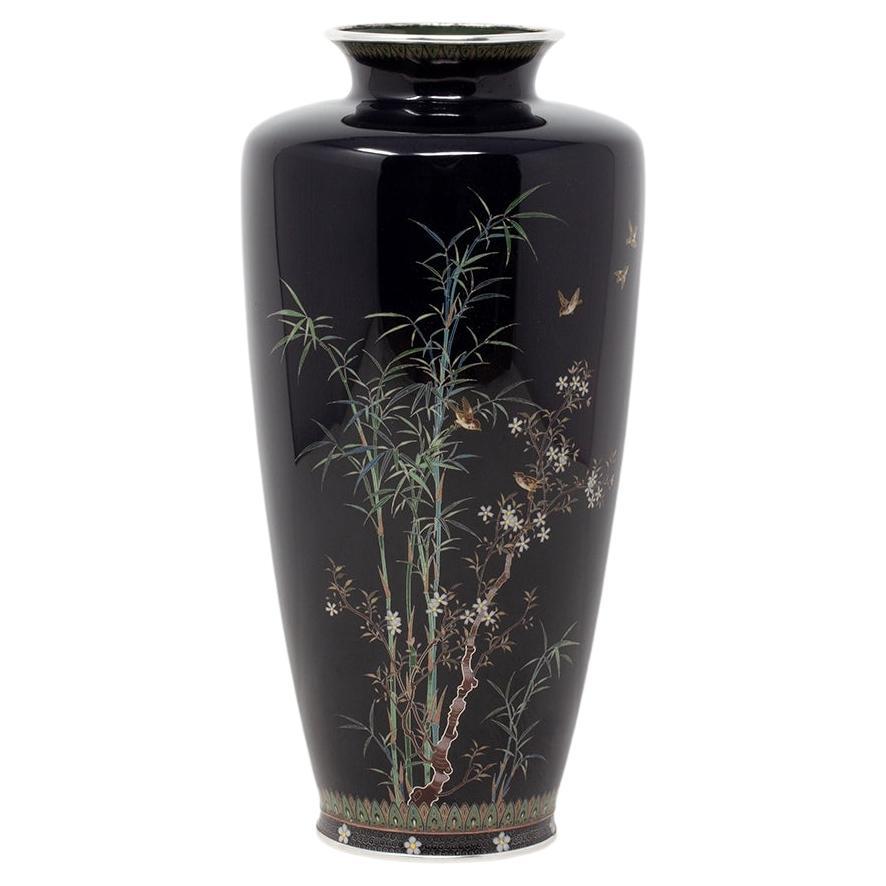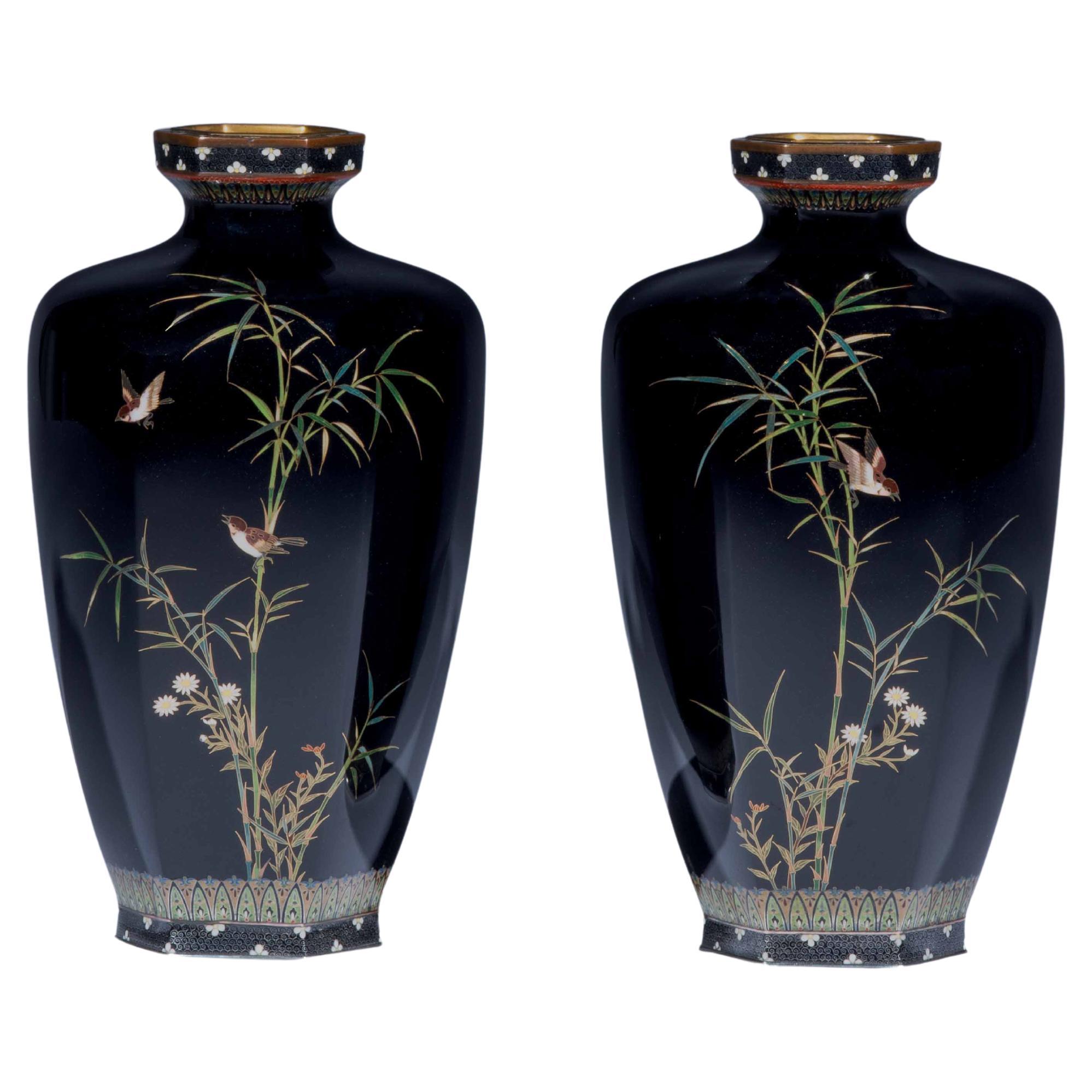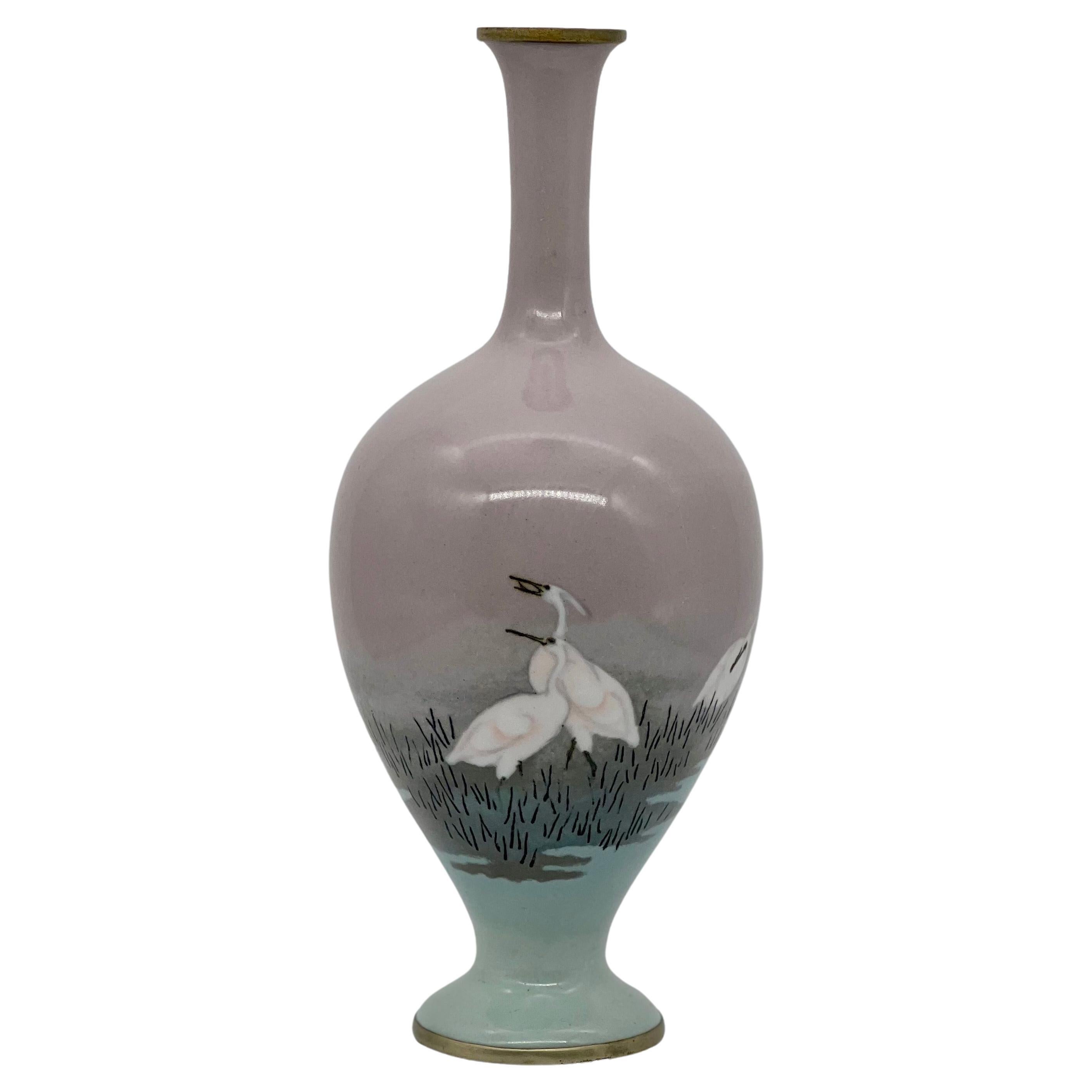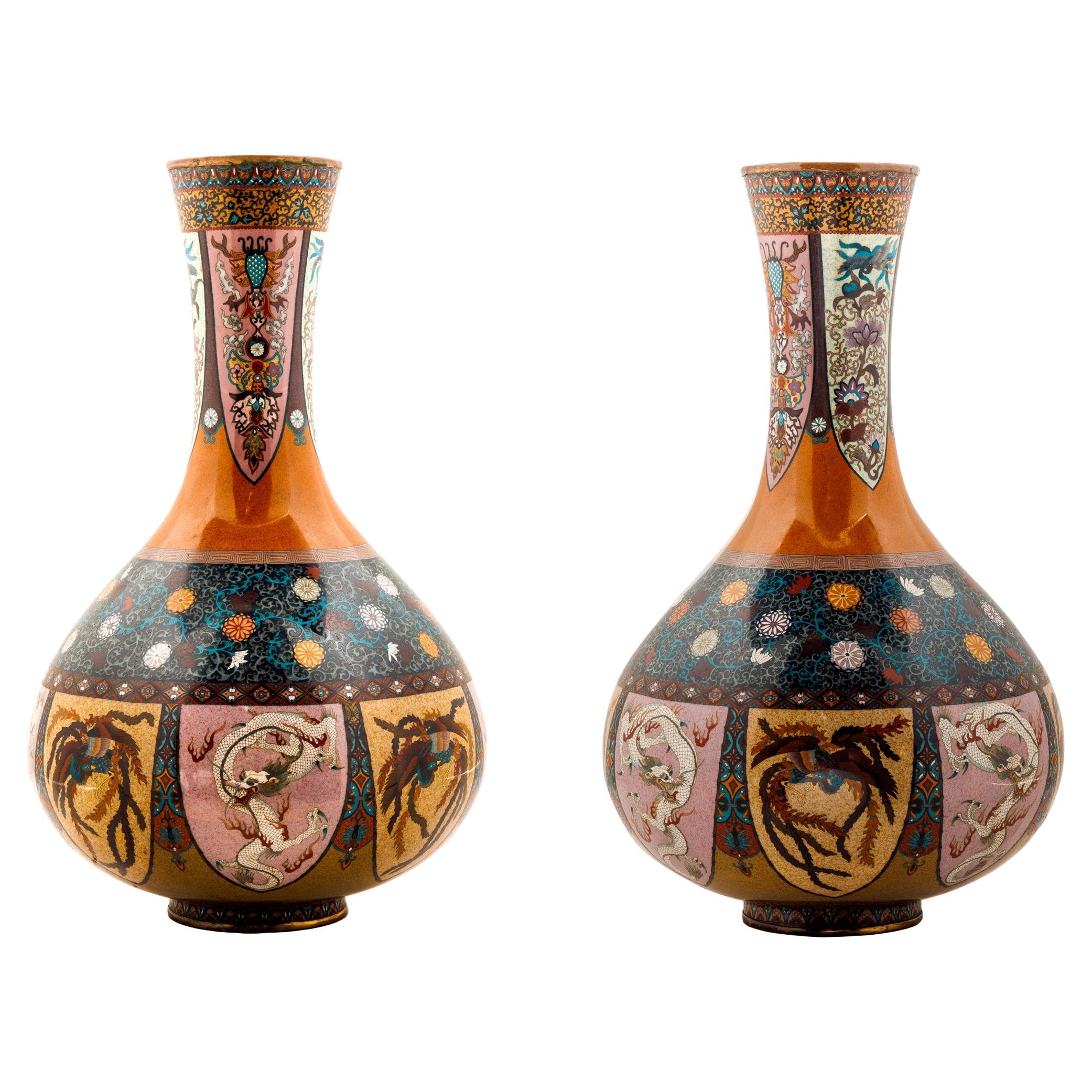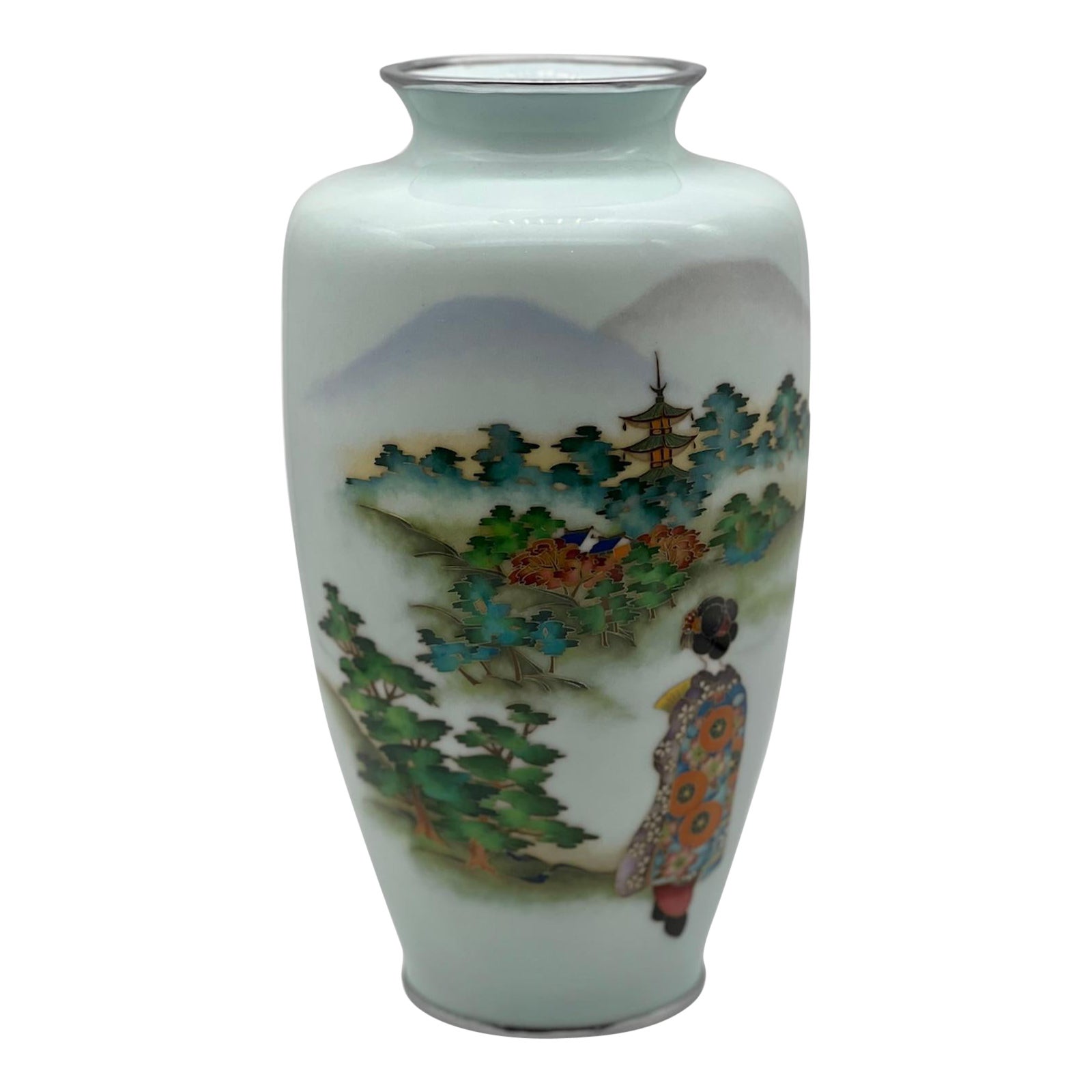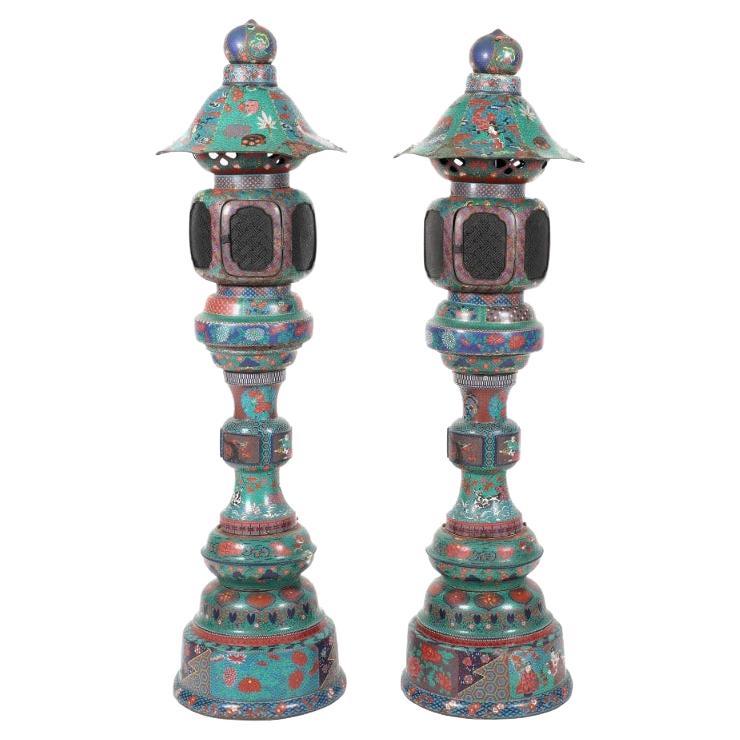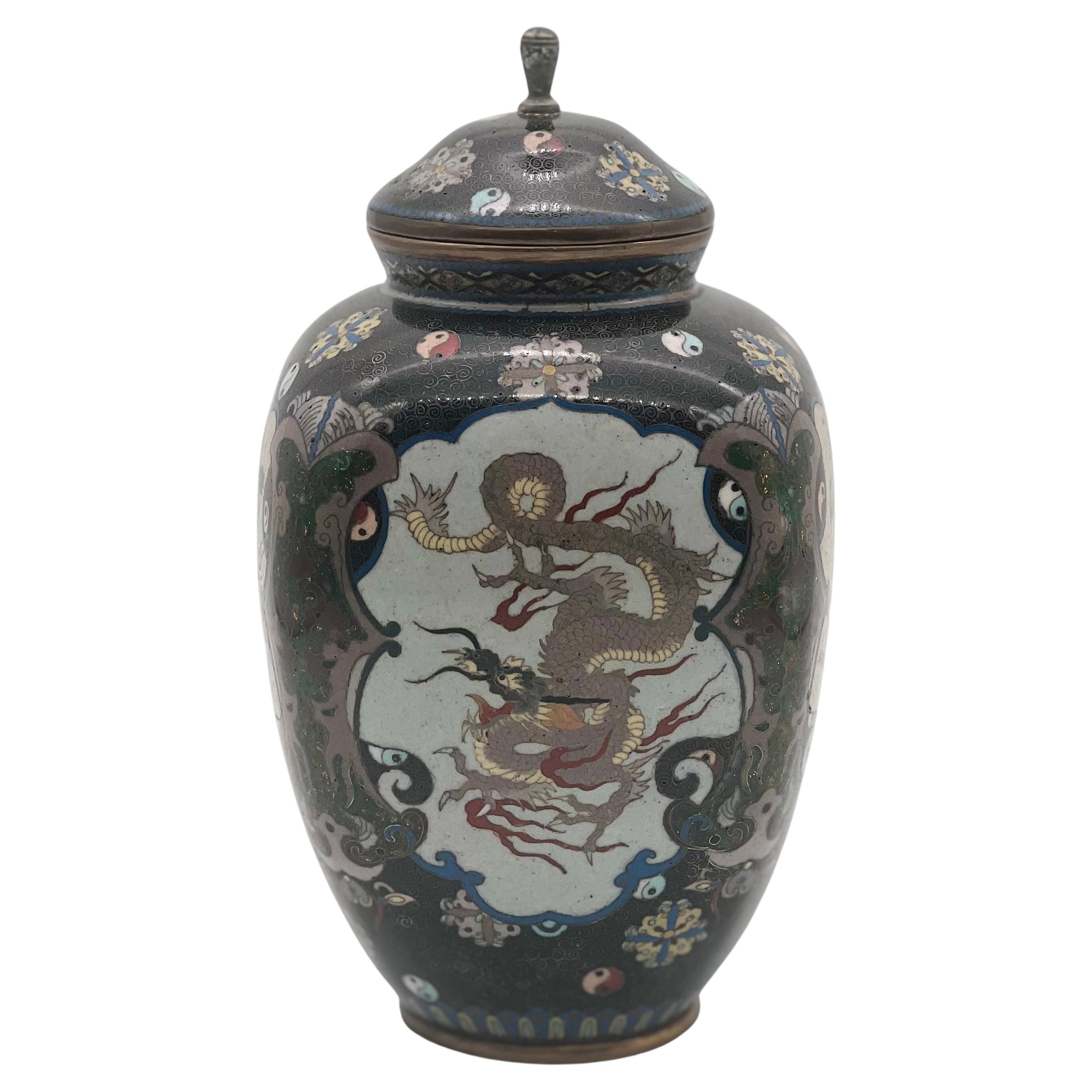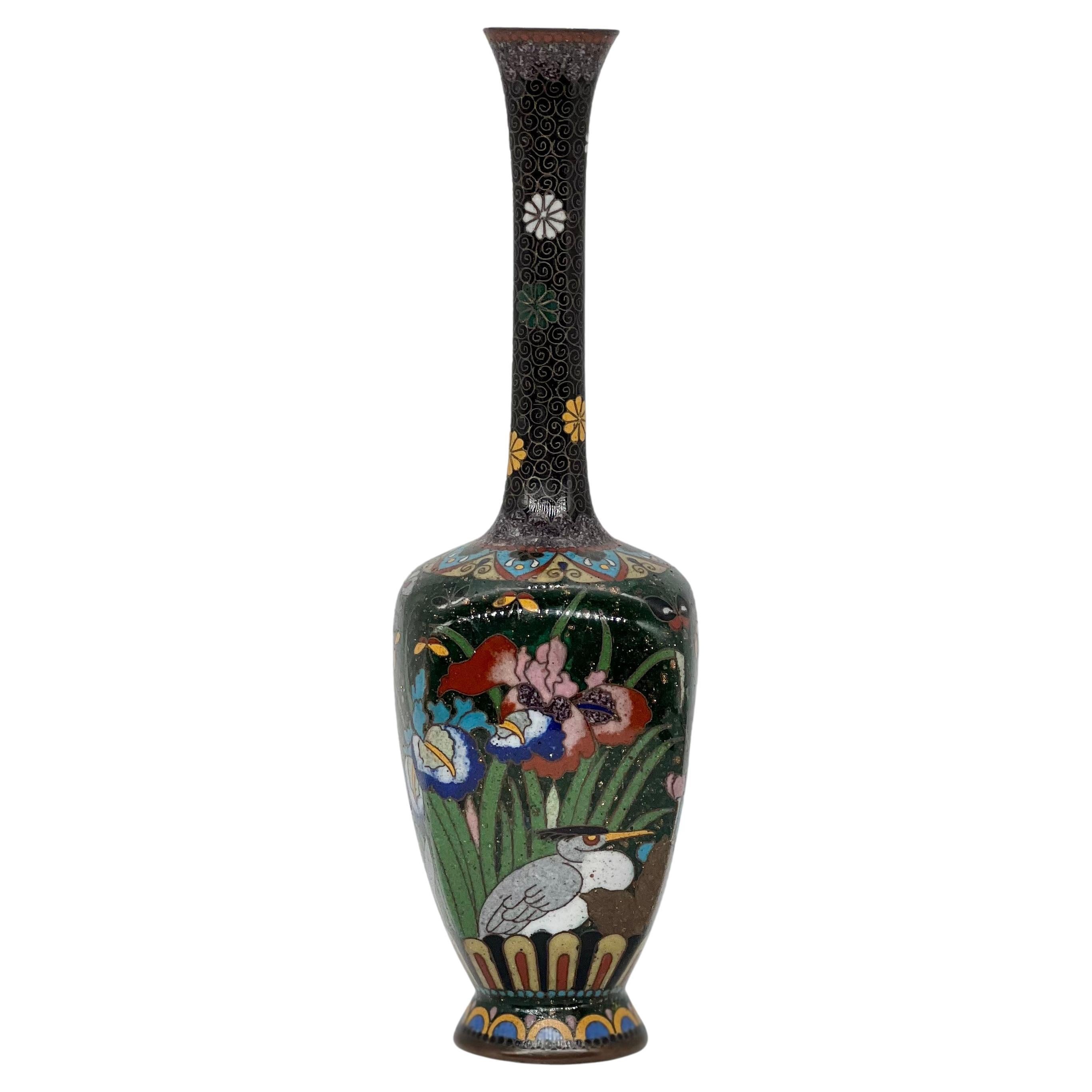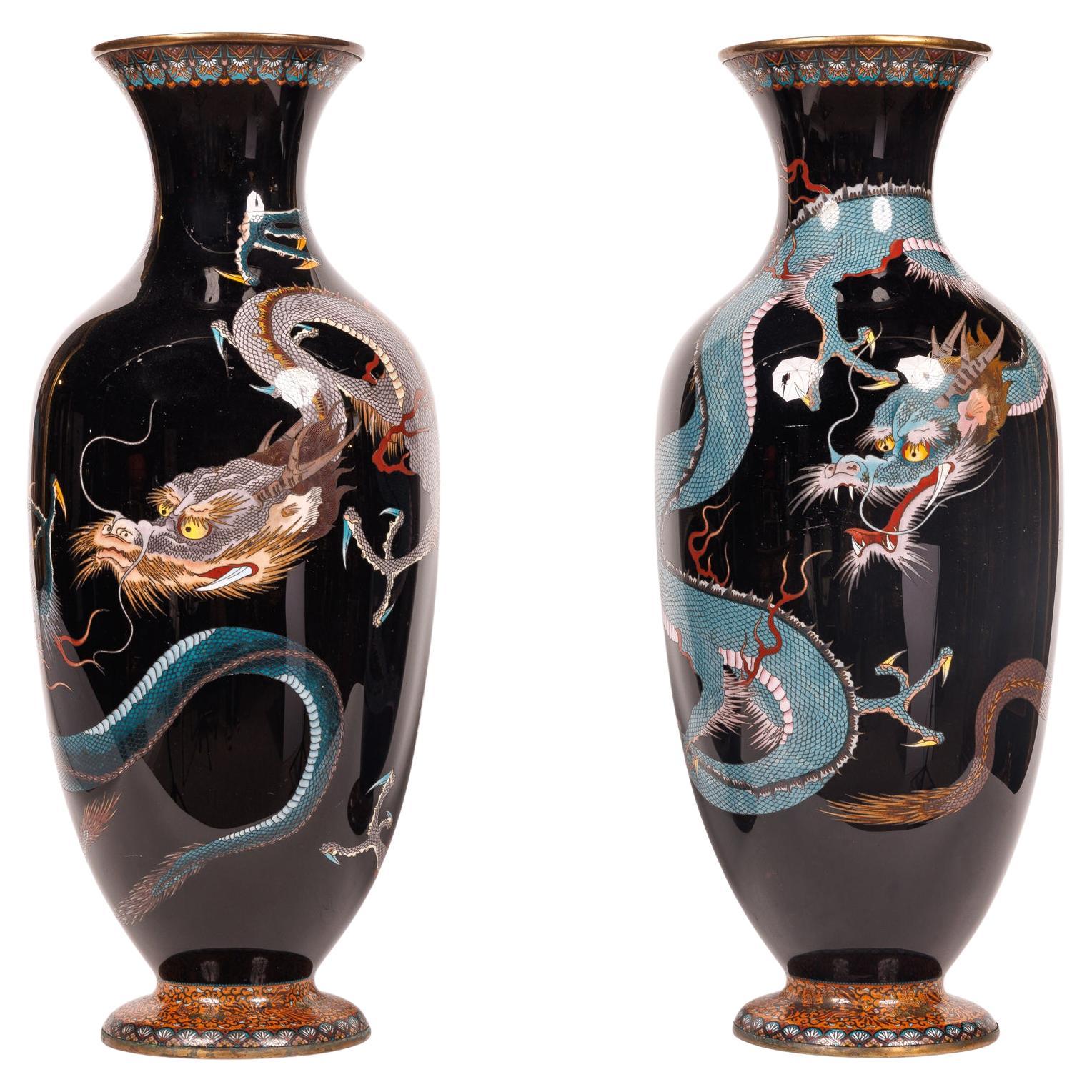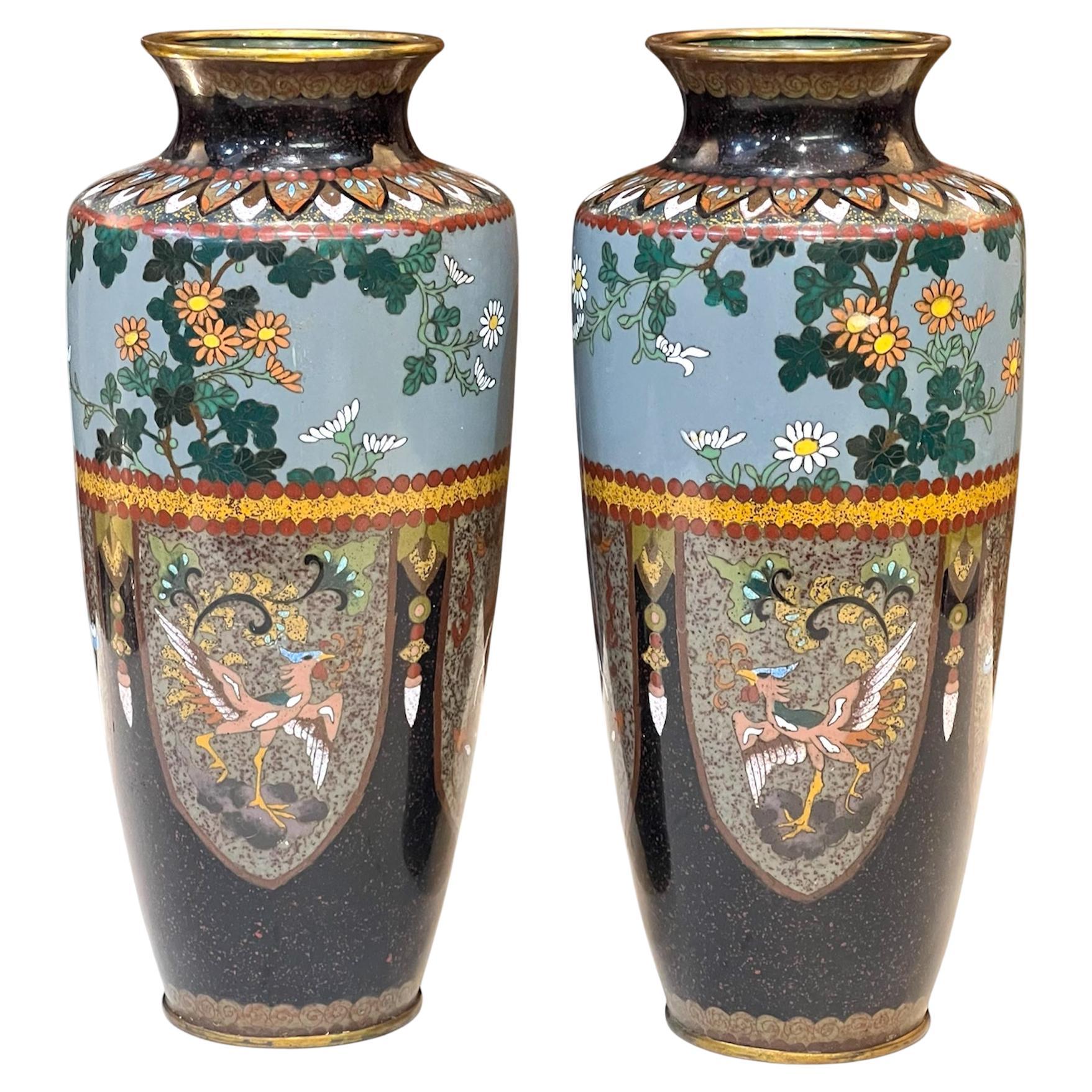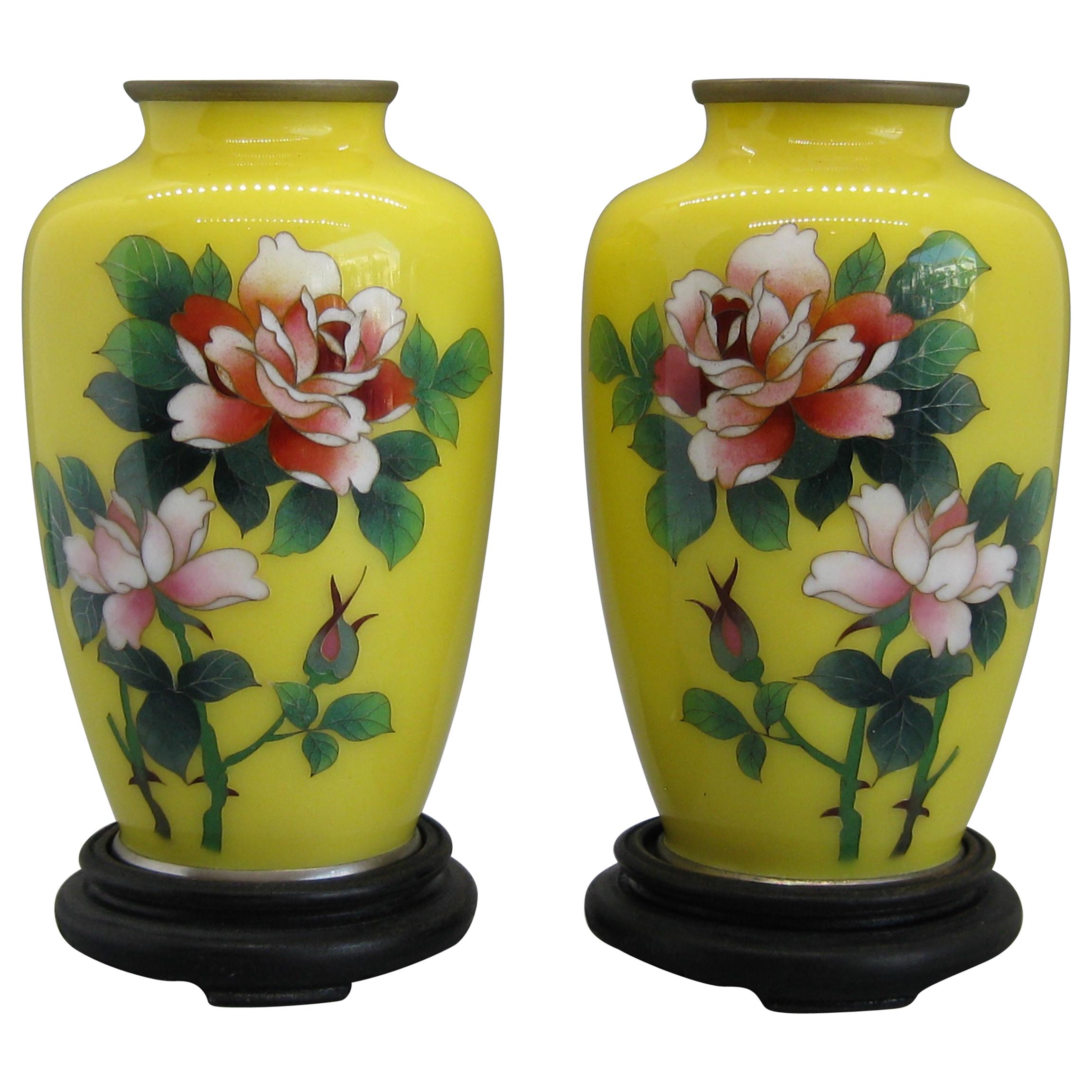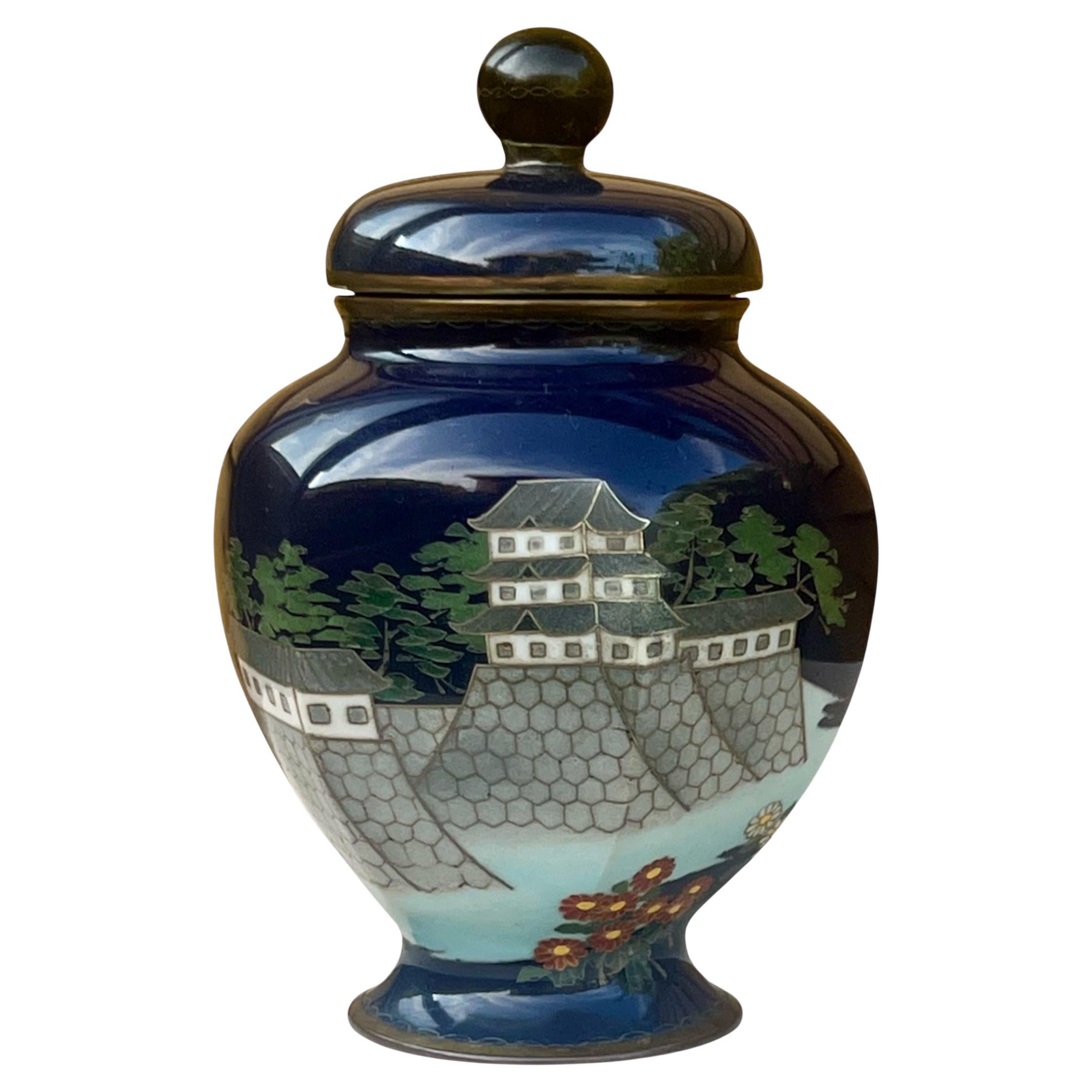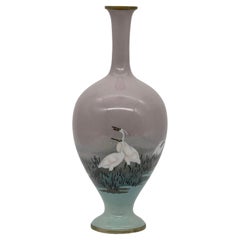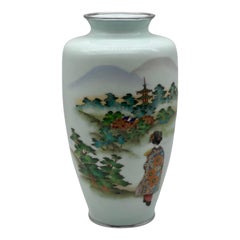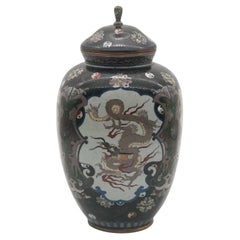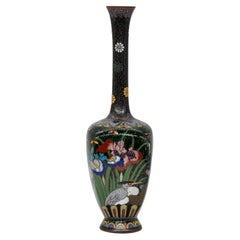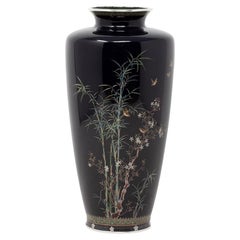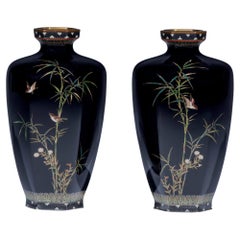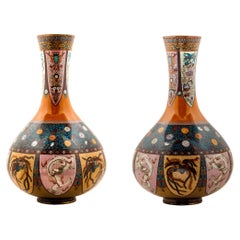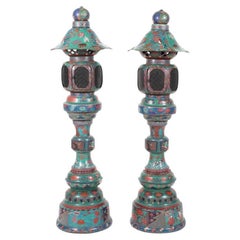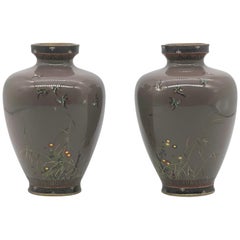
A Fine Pair of Japanese Cloisonne Enamel Vases Attributed to Hayashi Kodenji
View Similar Items
Want more images or videos?
Request additional images or videos from the seller
1 of 21
A Fine Pair of Japanese Cloisonne Enamel Vases Attributed to Hayashi Kodenji
$1,624.68List Priceper set
About the Item
- Attributed to:Hayashi Kodenji Studio (Artist)
- Dimensions:Height: 4.53 in (11.5 cm)Width: 2.96 in (7.5 cm)Depth: 4.53 in (11.5 cm)
- Sold As:Set of 2
- Materials and Techniques:Enamel,Cloissoné
- Place of Origin:
- Period:
- Date of Manufacture:circa 1890
- Condition:Wear consistent with age and use.
- Seller Location:London, GB
- Reference Number:Seller: LC1513231stDibs: LU8001232339482
About the Seller
No Reviews Yet
Vetted Professional Seller
Every seller passes strict standards for authenticity and reliability
Established in 2001
1stDibs seller since 2023
16 sales on 1stDibs
Authenticity Guarantee
In the unlikely event there’s an issue with an item’s authenticity, contact us within 1 year for a full refund. DetailsMoney-Back Guarantee
If your item is not as described, is damaged in transit, or does not arrive, contact us within 7 days for a full refund. Details24-Hour Cancellation
You have a 24-hour grace period in which to reconsider your purchase, with no questions asked.Vetted Professional Sellers
Our world-class sellers must adhere to strict standards for service and quality, maintaining the integrity of our listings.Price-Match Guarantee
If you find that a seller listed the same item for a lower price elsewhere, we’ll match it.Trusted Global Delivery
Our best-in-class carrier network provides specialized shipping options worldwide, including custom delivery.More From This Seller
View AllFine Japanese Cloisonné-enamel and Musen Vase Attributed to Namikawa Sosuke
Located in London, GB
A magnificent Cloisonné-enamel and Musen Baluster vase attributed to Namikawa Sosuke.
Meiji era (1868-1912), late 19th century.
This vase features an elegant classic form with a sle...
Category
Antique Late 19th Century Japanese Metalwork
Materials
Enamel
A Large Japanese Cloisonne Enamel vase attributed to Ando Jubei
By Ando Jubei
Located in London, GB
A Large Japanese Cloisonne Enamel vase attributed to Ando Jubei.
Taisho period (1912 – 1926)
A large baluster Cloisonne-Enamel vase worked in musen and silver wire of varying gauge...
Category
Early 20th Century Japanese Metalwork
Materials
Enamel
A Fine Japanese Cloisonne Enamel Vase and Cover. Meiji Period
Located in London, GB
A Exquisite Cloisonne Enamel Vase and cover
Meiji period -Late 19th C
Exquisite and refined four sided cloisonne vase and cover made in gold and silver wire with dragons and phoen...
Category
Antique Late 19th Century Japanese Metalwork
Materials
Enamel
Fine Japanese Kyoto Shippo Cloisonne Enamel Vase, 19th C
Located in London, GB
A fine Japanese Kyoto Shippo Cloisonne enamel vase 19th C
Meiji Period
JAPANESE CLOISONNE ENAMEL VASE,?decorated with cranes and butterflies amongst lotus and iris blooms reser...
Category
Antique Mid-19th Century Metalwork
Materials
Enamel
A Fine pair of Japanese cloisonné enamel vases Attributed to Honda Yasaburō
Located in London, GB
A Fine pair of Japanese cloisonné enamel vases
Attributed to Honda Yasaburō, Nagoya,
Meiji era
Each of baluster form, worked in polychrome enamels and silver wire on a mottled da...
Category
Antique 19th Century Japanese Metalwork
Materials
Enamel
A Fine Japanese Cloisonné-Enamel Vase/Jar with Cover Attributed to Ando
Located in London, GB
A Fine Japanese Cloisonné-Enamel Vase/Jar with Cover Attributed to the Ando Company,
Meiji to Taishō period, early 20th century
Of baluster form with a domed cover surmounted by a k...
Category
Antique 19th Century Japanese Metalwork
Materials
Enamel
You May Also Like
Japanese Antique Cloisonne Enamel Vase Hayashi Kodenji
Located in Newark, England
MEIJI PERIOD (1868-1912)
From our Japanese collection, we are delighted to introduce this good size Japanese Cloisonne Enamel Vase. The Vase of gently tapered form with a pinched n...
Category
Antique Early 1900s Japanese Meiji Metalwork
Materials
Gold, Silver, Enamel
Pair of cloisonné vases attributed to Hayashi Kodenji
Located in Milano, IT
Pair of vases decorated with polychrome cloisonné enamels on a midnight blue ground, worked in silver and gold thread attributed to Hayashi Kodenji. The hexagonal body depicts sparro...
Category
Early 20th Century Japanese Metalwork
Materials
Enamel
Large Pair of Japanese Cloisonne Enamel Vases Attributed to Honda Yasaburo
Located in Queens, NY
A large pair of Japanese Cloisonne Enamel vases attributed to Honda Yasaburo, 19th century.
Finley decorated with the rich enamel colors of orange and green, these vases are desig...
Category
Antique 19th Century Japanese Meiji Metalwork
Materials
Copper, Enamel
Large Pair of Japanese Cloisonne Enamel Lanterns Attributed to Kaji Tsunekichi
Located in Queens, NY
A Large Pair of Japanese Cloisonne Enamel Lanterns Attributed to Kaji Tsunekichi, Edo Period, 19th century
Japanese cloisonne lanterns were made during the Meiji period, from the late 19th to early 20th century, and were often used as decorative lighting fixtures in temples and shrines.
Kaji Tsunekichi (1866-1916) was a Japanese cloisonné artist who was active in the late 19th and early 20th centuries. He was born in Tokyo and learned the art of cloisonné from his father, Kaji Sataro, who was also a cloisonné artist. He was renowned for his mastery of the shippo-yaki technique, which involves creating intricate designs with thin wires on a metal base before filling in the spaces with enamel.
Tsunekichi was known for his exceptional technical skills and his ability to create intricate designs with vibrant colors. His works often featured nature motifs, such as flowers, birds, and fish, which were rendered in a highly detailed and naturalistic style. He also experimented with new techniques, such as plique-à-jour, a type of cloisonné that creates a stained-glass effect.
Tsunekichi's works were highly prized during his lifetime and continue to be sought after by collectors today. He won numerous awards for his cloisonné creations, including a Gold Medal at the 1900 Exposition Universelle in Paris. His works are characterized by their fine wirework, precise enamel application, and attention to detail.
Some of Tsunekichi's most famous works include a pair of large cloisonné vases...
Category
Antique 19th Century Japanese Edo Metalwork
Materials
Copper, Enamel
Large Pair of Meiji Period Japanese Cloisonne Enamel Double Dragon Vases
Located in Queens, NY
A large pair of Meiji Period Japanese Cloisonne Enamel Double Dragon Vases, 19th century.
Japanese cloisonne enamel dragon vases are highly ...
Category
Antique 19th Century Japanese Meiji Metalwork
Materials
Copper, Enamel
Fine Pair of Antique Japanese Cloisonné Enamel Vase Attributed to Ando Jubei
By Ando Jubei
Located in San Diego, CA
Fine pair of antique Japanese cloisonné enamel vases dating from the early 1900s. The both are marked by the artist on the bottom. These are attributed to master artist Ando Jubei. B...
Category
Early 20th Century Japanese Metalwork
Materials
Enamel
$520 Sale Price / set
20% Off
Recently Viewed
View AllMore Ways To Browse
Yellow Cloisonne Vase
Chrysanthemum Cloisonne Vase
Hayashi Kodenji Cloisonne
Hayashi Kodenji
Japanese Bronze Plate
Antique Turkish Copper
Cloisonne Charger
Small Incense Burner
Mughal Bronze
Meiji Okimono
Meiji Bronze Dragon
Indo Persian Art
Antique Copper Charger
Islamic Brass Tray
Japanese Bronze Incense
Mughal Copper
Japanese Censer
Chinese Archaic Bronze
